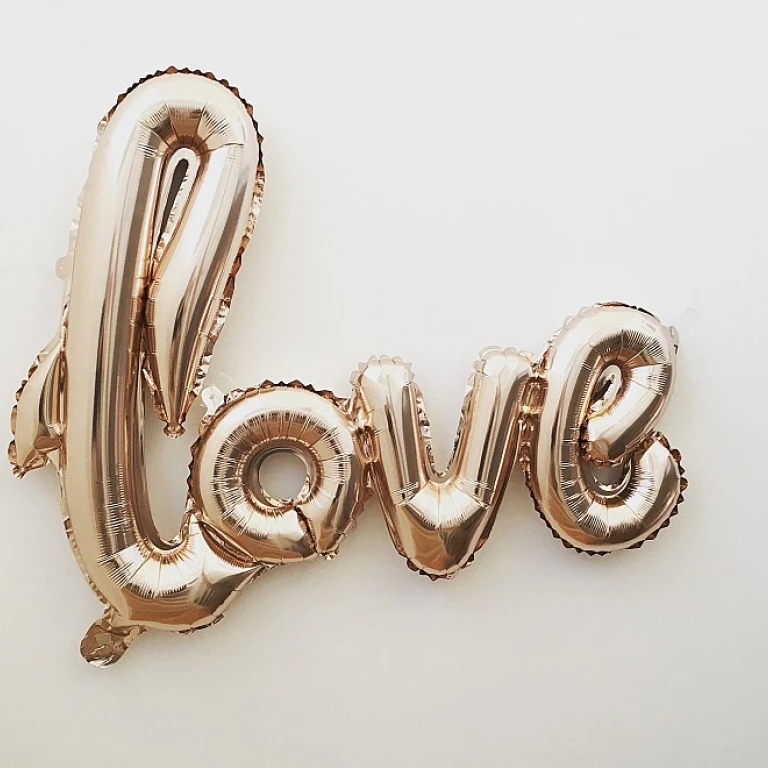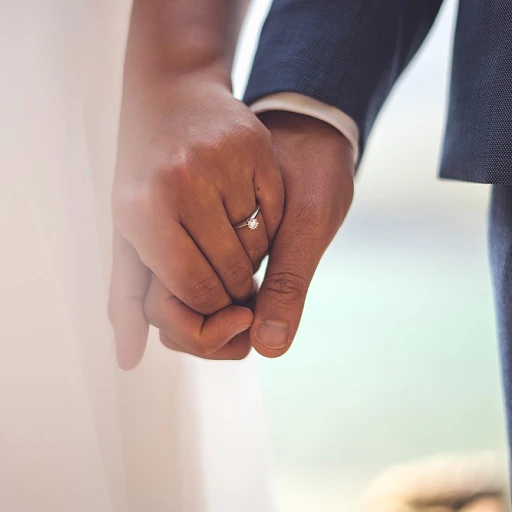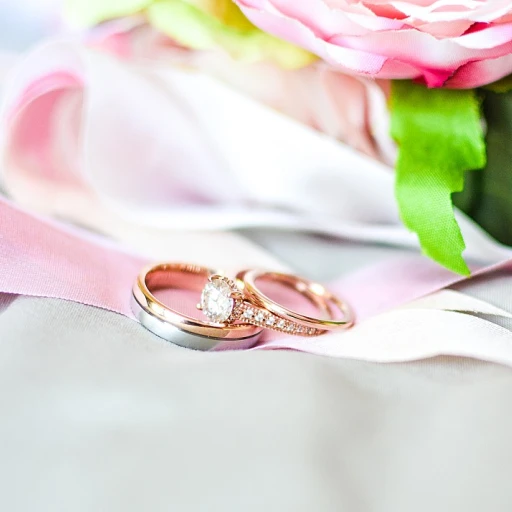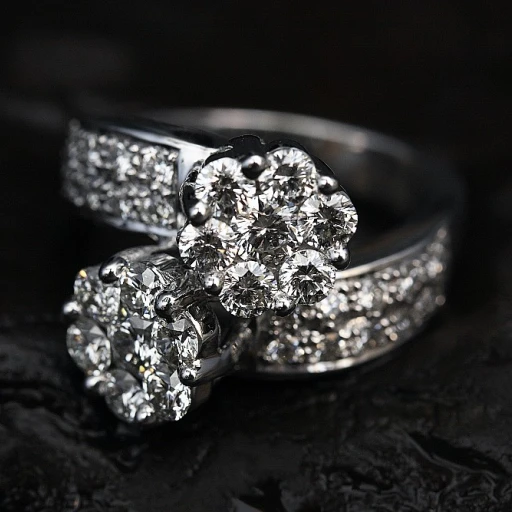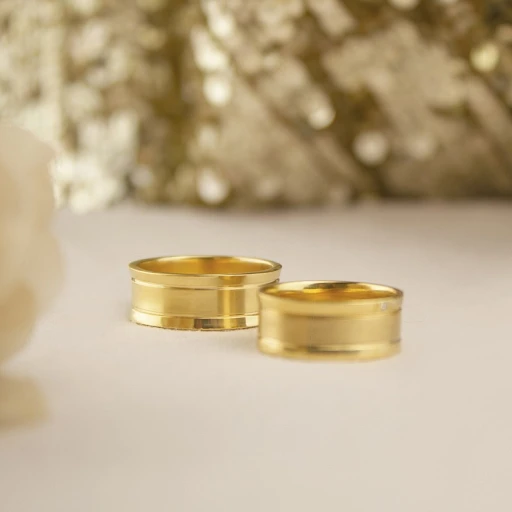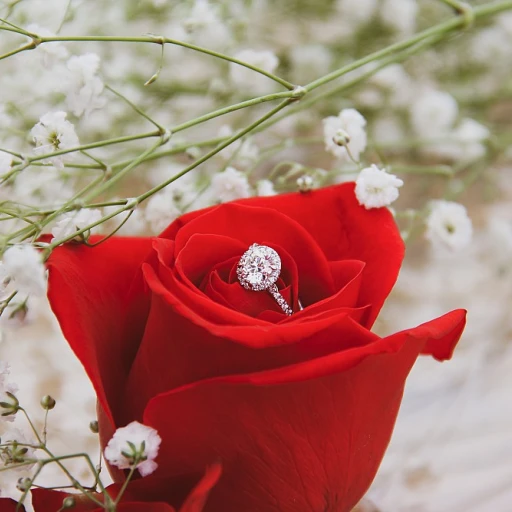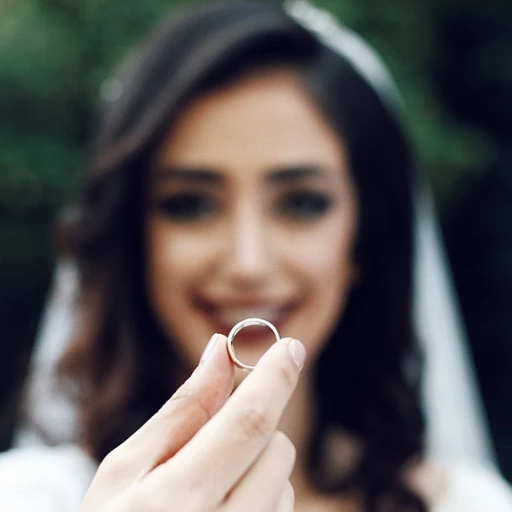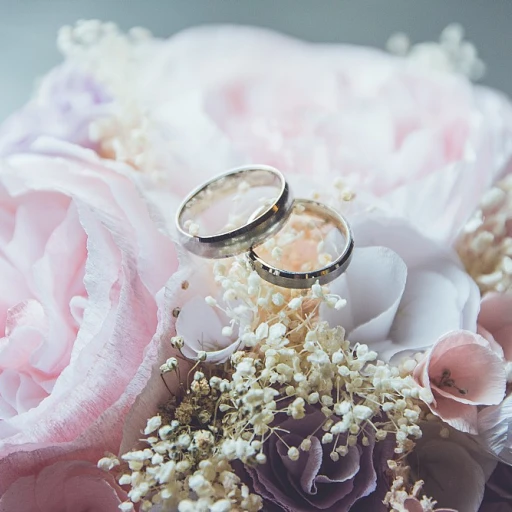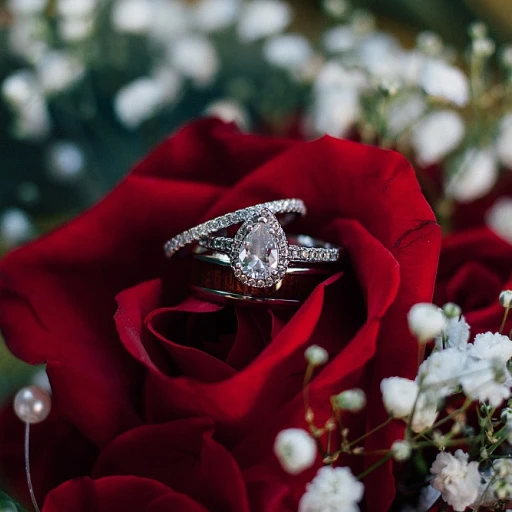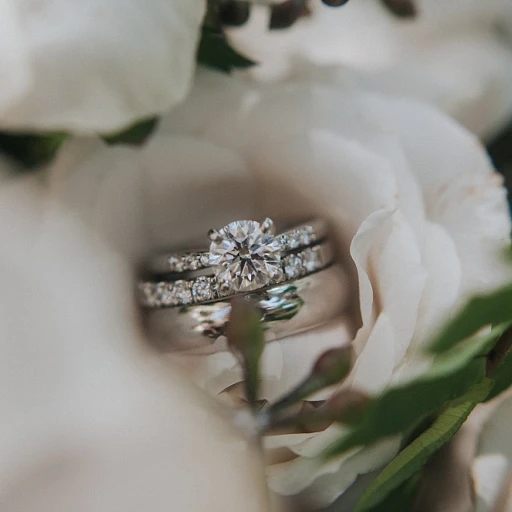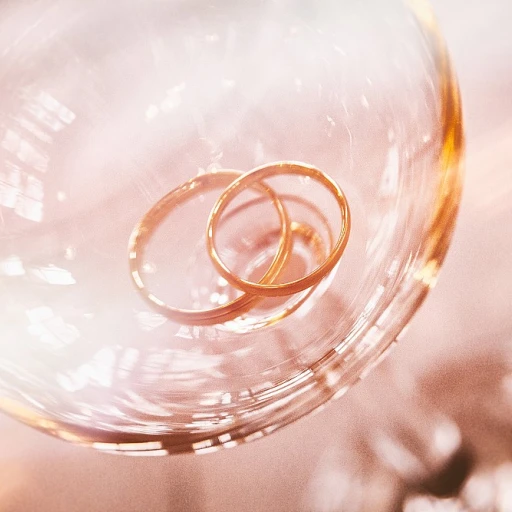
The Historical Context of 1930s Wedding Rings
Understanding the 1930s Era
The 1930s was a transformative period in history, and wedding rings from this era reflect a unique blend of cultural and economic influences. This decade was marked by the Great Depression, a time of economic turmoil which impacted everyday life, including consumer behavior in the jewelry market. Despite financial challenges, the enduring tradition of exchanging wedding rings persisted, and couples sought meaningful symbols of their commitment. Wedding rings from the 1930s often display the hallmarks of the Art Deco movement. This artistic influence generated designs characterized by geometric shapes, symmetry, and bold combinations of materials. Art Deco flourished between the 1920s and 1930s, bringing a touch of glamour and modernity to the jewelry pieces of the era.A Shift in Material Choices
During the depression, practicality became paramount, leading to a preference for more accessible metals like white gold over platinum for wedding bands. This choice was driven by the need for affordability without sacrificing elegance. White gold offered a similar luster to platinum, making it a popular alternative during those financially challenging years. Nonetheless, platinum remained a desired metal in engagement rings, prized for its durability and the prestigious aesthetic it offered. Whether in the form of antique three stone settings or elegant diamond solitaire designs, rings from this period reflected the prevailing sentiments of conservation paired with a hint of opulence. If you're curious about additional insights on wedding rings, consider exploring fascinating historical facts about wedding rings. This exploration sheds light on the nuances of how these cherished symbols have evolved over the years, adding depth to your understanding of their timeless charm.Design Characteristics of 1930s Wedding Rings
Distinctive Features of 1930s Wedding Rings
The 1930s was a decade marked by unique design elements in wedding rings, reflecting the era's artistic influences and technological advancements. These rings often showcased a blend of elegance and innovation, capturing the spirit of the time.
Art Deco Influence
One of the most prominent features of 1930s wedding rings is the influence of the Art Deco movement. This style is characterized by geometric shapes, bold lines, and intricate patterns. Rings from this era often feature symmetrical designs, with a focus on clean lines and a modern aesthetic. The use of contrasting colors and materials, such as combining white gold with yellow gold or platinum, was also popular, adding to the visual appeal of these pieces.
European Cut Diamonds
During this period, the European cut diamond was a favored choice for engagement rings. This cut is known for its round shape and larger facets, which enhance the diamond's brilliance and sparkle. The European cut, along with other styles like the diamond solitaire and three-stone settings, became synonymous with elegance and sophistication.
Use of Colored Gemstones
In addition to diamonds, colored gemstones such as sapphires were frequently used in 1930s rings. These stones added a vibrant touch to the jewelry, often set alongside diamonds to create a striking contrast. The combination of diamond and sapphire was particularly popular, offering a timeless and classic look.
Metals and Settings
Platinum was a favored metal for wedding bands and engagement rings during the 1930s, prized for its durability and ability to hold intricate designs. However, white gold and yellow gold were also commonly used, providing a range of options for different tastes and budgets. The settings often featured detailed engravings and milgrain edges, adding texture and depth to the rings.
These design characteristics not only reflect the artistic trends of the 1930s but also highlight the craftsmanship and attention to detail that went into creating these beautiful pieces of jewelry. As you explore the charm of vintage rings, consider how these elements can inspire your choice of a wedding ring today.
Popular Gemstones and Metals in the 1930s
Preferred Gemstones and Alluring Metals
When it comes to the timeworn beauty of 1930s wedding rings, the gemstones and metals used hold a significant place. During that era, a deep fascination with glamour and sophistication was evident in every intricate detail of these cherished pieces. One of the most celebrated gemstones in wedding jewelry of the 1930s was the diamond. The art deco movement had a profound impact, encouraging an appreciation for geometric designs and the allure of the European cut diamond. Not only did these cuts accentuate the diamond's brilliance, but they also complemented the ring's overall deco charm perfectly. Alongside diamonds, sapphires were a popular choice, often introduced as stunning complements in a three-stone setting. A vintage engagement ring from the 1930s would frequently boast a vivid diamond sapphire combination, allowing for striking contrasts and a unique sense of character. In terms of metals, gold and platinum reigned supreme. While yellow gold added a rich, warm hue synonymous with love, the emergence of white gold and deco platinum presented a fresh take on wedding jewelry. Platinum, known for its enduring nature, became a favored choice due to its durability and its ability to accentuate the clarity and sparkle of set diamonds. Both metals became invaluable in crafting exquisite yet long-lasting pieces. While reflecting on these enchanting vintage engagement rings, it is essential to consider their authentic materials. For those seeking to echo this historical elegance in modern celebrations, discovering the elegance of a pear-shaped wedding set may inspire thoughtful choices. These elements combined to create timeless symbols of commitment, still cherished today for their lasting beauty and historical charm.The Influence of Art Movements on 1930s Rings
Art Influences on 1930s Jewelry Pieces
The 1930s was a fascinating era for wedding rings where the art world had a significant influence on jewelry design, particularly in engagement rings. Art movements of the time, including the Deco and Modernism styles, left a lasting impression on the aesthetics and intricacies found in the rings crafted during this period. Originating in the early 20th century, Art Deco had captivated audiences with its bold geometry and lavish ornamentation, and its impact continued well into the 1930s. Seeking elegance and a forward-looking style, artisans incorporated these elements into wedding rings with stunning results. Rings from this era often showcased sharp lines and symmetrical designs, a common characteristic of the Art Deco movement. Several distinctive features set 1930s engagement rings apart from those created in other decades:- Geometric Patterns: Rings fashioned during this era often flaunted geometric shapes, borrowing heavily from Deco influences. The interplay of triangles, rectangles, and circles brought a modern look to traditional ring designs.
- Mixed Metal Use: Jewelry designers from the 1930s were not shy about blending different metals. Platinum was favored for its durability and lustrous finish, but yellow gold and white gold were also frequent choices, often seen in combination.
- Diamond Cuts: The European cut diamond was a popular choice, presenting a rounder and more brilliant form than its predecessors. It was frequently used in solitaire settings or in three stone arrangements that allowed more light play and sparkle.
- Sapphire Highlights: Besides diamonds, sapphires often found inclusion in wedding bands and engagement pieces. Their rich blue hues served as a striking contrast to white gold or platinum settings, adding a vibrant element to vintage engagements.
Caring for Vintage 1930s Wedding Rings
Ensuring the Longevity and Beauty of 1930s Wedding Rings
Owning a piece of history such as a wedding ring from the 1930s is a privilege that comes with the responsibility of proper care. Whether your ring features a deco-style design, a european cut diamond, or is set in yellow or white gold, maintaining its original charm requires particular attention and expertise. Firstly, it is important to understand the materials of your vintage engagement ring. Many rings from the 1930s were crafted in platinum for its durability and aesthetic appeal, although gold was also common. If your ring features platinum, periodic professional cleaning can help maintain its bright and sleek finish. For yellow and white gold rings, regular polishing can prevent tarnish and scratches over time. Gemstones, such as diamond or sapphire, require specific care depending not only on their type but also on their cut and setting. For a diamond solitaire or three-stone arrangement, inspect each stone regularly to ensure they remain secure in their settings. The european cut diamonds, prevalent during the 1930s, often have larger facets which can display dirt more prominently, necessitating regular gentle cleaning. When cleaning your ring at home, use mild soap and warm water with a soft brush to gently clean the intricate details typical of art deco jewelry. Avoid harsh chemicals, which could damage both the gemstones and the band. For antique pieces, it is always advisable to consult with a professional jeweler who can offer expert care and maintenance. Additionally, consider storing your ring properly when not in use. Keep it in a separate compartment or a soft pouch to prevent scratches or damage from other jewelry. For those interested in acquiring a wedding band or ring circa the 1930s today, it's essential to remember the unique aspects and the needs of vintage jewelry to preserve its elegance and historical significance for years to come. Maintaining your 1930s wedding ring not only preserves its material value but also honors the art and heritage embedded in that era's remarkable designs.Choosing a 1930s-Inspired Wedding Ring Today
Embracing the 1930s Aesthetic in Modern Rings
Choosing a 1930s-inspired wedding ring today allows couples to embrace a unique blend of history and style. The charm of the 1930s rings lies in their intricate designs and the influence of art deco, which was a significant art movement during that era. These rings often feature geometric patterns and bold lines, making them a standout choice for those who appreciate vintage aesthetics.
Key Features to Look For
- Art Deco Influence: Look for rings with symmetrical designs and geometric shapes. The art deco style is characterized by its bold and elegant patterns, often incorporating elements like chevrons and sunbursts.
- European Cut Diamonds: Many 1930s rings feature European cut diamonds, known for their unique sparkle and charm. These diamonds have a distinct appearance compared to modern cuts, offering a vintage allure.
- Metals: White gold and platinum were popular choices during the 1930s. These metals not only provide a classic look but also enhance the brilliance of the diamonds and gemstones.
- Gemstones: In addition to diamonds, sapphires were a favored choice. A diamond sapphire combination can add a touch of color and elegance to your ring.
Considerations for a Vintage-Inspired Purchase
When selecting a 1930s-inspired wedding ring, consider the craftsmanship and authenticity of the piece. Authentic vintage rings can be a wonderful choice, but if you prefer a new ring with a vintage look, many jewelers offer replicas that capture the essence of the era. Ensure that the ring is crafted with quality materials, such as deco platinum or yellow gold, to maintain its beauty over time.
For those who appreciate the history and artistry of wedding rings from years ago, a 1930s-inspired ring offers a timeless option that combines elegance with a touch of nostalgia. Whether you choose a diamond solitaire or a three-stone design, these rings are a testament to the enduring appeal of vintage jewelry.

